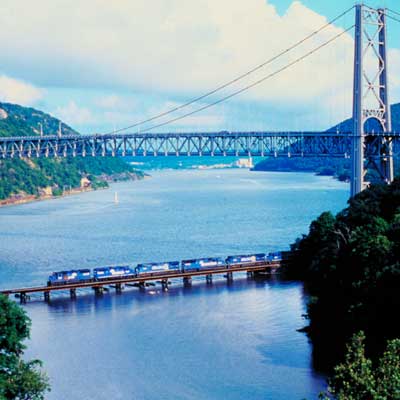Monday, August 13, 2007
Additional Funds for Emergency Repairs and Reconstruction of the Interstate I-35 Bridge
On August 6, 2007, President Bush signed into law H.R. 3311, which authorizes additional funds for emergency repairs and reconstruction of the Interstate I-35 bridge located in Minneapolis, Minnesota, that collapsed on August 1, 2007, and waives the limitation on emergency relief funds for those emergency repairs and reconstruction.
Subscribe to:
Post Comments (Atom)


1 comment:
Minnesota DOT (MN-DOT) has contracted with Carl Bolander and Sons for debris removal from the collapsed bridge. The contractor is ready to begin work once the recovery operations are complete. MN-DOT also announced plans for public meetings to discuss the design-build project to replace the I-35 W bridge, to be held in the days ahead. Additional information is available at:
http://www.dot.state.mn.us/i35wbridge/
Because of the bridge collapse and the amount of debris generated by the collapse, there is much concern for the environment. Two agencies are conducting tests to ascertain whether or not the air quality and water quality are being affected by the bridge collapse. A map of the air and water testing sites has been provided by the City of Minneapolis and can be accessed at:
http://www.ci.minneapolis.mn.us/minneapolisresponds/docs/responds_bridgecollapse_map.pdf
The Mississippi Watershed Management Organization (MWMO) is the agency responsible for the water quality testing. MWMO is taking water samples at regular intervals from the Mississippi River, both downstream and upstream from the bridge, and comparing the results. MWMO's website was updated on 8/10 with results from the water quality tests, stating: "Preliminary results indicate that water quality conditions are similar upstream and downstream of the bridge. According to the MN Department of Natural Resources, there are no drinking water intakes for Minnesota cities in the Mississippi River downstream of the bridge. There should be no impact to Minneapolis/St. Paul drinking water supplies because their water intakes are upstream of the collapse."
http://www.mwmo.org/
The U.S. Environmental Protection Agency is conducting air monitoring tests for the Minnesota Pollution Control Agency at sites around the collapsed bridge. The Draft Air Sampling Plan for the Minnesota 35W Bridge is available at:
http://www.ci.minneapolis.mn.us/minneapolisresponds/docs/responds_sap.pdf
Results of the air monitoring tests (report dated August 11, 2007) are available at:
http://www.ci.minneapolis.mn.us/minneapolisresponds/docs/responds-AIR-2007-08-13.pdf
Twincities.com is reporting that the "transportation panels of the Minnesota House and Senate will hold a joint public hearing on the 1-35 W bridge" on Wednesday (8/15). Additional information is available at: http://www.twincities.com/collapse/ci_6608648?nclick_check=1.
Post a Comment